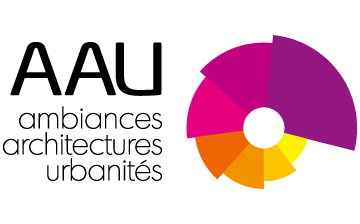Le métissage culturel comme générateur d’ambiances et de formes urbaines spécifiques : les quartiers de Capace Piccolo et Capace Grandeà Sousse, à la croisée des cultures italiennes, françaises et tunisiennes
Cultural diversity as a generator of atmospheres and specific urban form: The districts of Capace Piccolo and Capace Grande in Sousse, at the crossroads of Italian, French and Tunisian cultures
AMMAR Thoumader - Thèse de doctorat soutenue en 2017
Encadrement : Jean-Paul Thibaud
FR
La colonisation et l’immigration créent des espaces dits de l’entre-deux, des « espaces in-between », où les limites et les frontières entre identités et cultures sont remises en question, où sont générés de multiples métissages.
Dans le cadre de notre recherche nous nous sommes intéressé plus particulièrement à deux quartiers situés en Tunisie, dans la ville de Sousse, dont les noms sont Gabadgi El Foukani et Gabadgi Loutani , ou en sicilien « Capaci Supra e Capaci Jusu ». Ces deux quartiers portent le nom d’une localité sicilienne, Capaci. Le plus intéressant des faits est que ces lieux ont été construits et occupés par des populations mélangées, majoritairement siciliennes issues de l’immigration. Mais il y avait aussi d’autres communautés bien diversifiées du point de vue des nationalités et des croyances. Ces quartiers ont ensuite été progressivement réinvestis par une population exclusivement tunisienne.
Le contexte historique et social de ces quartiers, nous a conduit à porter notre attention sur la relation entre les ambiances, l’espace public urbain et la notion de métissage. La vérification de l’hypothèse d’une persistance de caractéristiques ambiantales spécifiques constitue un réel enjeu scientifique pour cette recherche. Nous avons choisi la notion de métissage plus qu’une autre forme de mélange étant donné qu’elle se présente comme une pensée temporelle. Nous avons par conséquent été mené à interroger les ambiances des quartiers en appréhendant le métissage comme devenir, comme processus de transformation né de la rencontre de l’autre, mais aussi comme une expérience intériorisée vécue dans la durée.
Notre méthodologie de travail s’est déployée selon trois mouvements, qui se sont croisés et enrichis mutuellement : observer et raconter, décrire, expérimenter. Les deux premières phases se sont plus concentrées sur le terrain, la troisième s’est présentée sous la forme d’une expérimentation développée sous l’égide d’une installation-projection.
Mots-clés : métissage, espace public, devenir, temporalité.
EN
Colonization and immigration create areas called “in-between spaces”. Limits between cultures and identities in these “in-between spaces” are coming under some question.
As a result, multiple cultural mixings are generating. As part of our research, we focused specifically on two districts located in the city of Sousse, in the central-east of Tunisia, known as Gabadgi El Foukani and Gabadgi Loutani, or in Sicilian « Capaci Supra e Capaci Jusu3».These two districts take on Sicilian locality name, Capaci. The most interesting fact is that these places, not only, were built and occupied by mixed populations, mostly Sicilian immigrant, but also there were other communities well diversified in terms of nationalities and beliefs. These districts were then gradually reinvested by an exclusively Tunisian population.
The historical and social context of these districts has led us to focus our attention on the relationship between ambiances, urban public space and the notion of cultural mixing. Verification of the hypothesis of persistent specific ambient characteristics is a real scientific challenge for this search. We have chosen the notion of cultural mixing more than another form of mixing since it presents itself as a temporal thought. We were therefore led to question the ambiences of the districts by apprehending the cultural mixing as becoming, as born transformation process of meeting others, and as an internalized experience over time.
Our work methodology is deployed in three movements that have crossed and enriched each other: Observe & tell, describe, and experiment. The first two phases were more concentrated on working on the site. The third phase was presented in the form of an experiment developed under the aegis of an installation projection.
Key Words: Ambiance – Cultural mixing – Public space – Interaction – Becoming – Temporality – Experimentation
